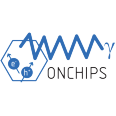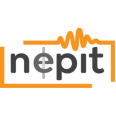UT offers two website options for projects, joint research initiatives or collaboration, both managed by yourself.
The options
1) Standard: UT system (WebHare) with UT template, also available with own logo/colour/domain name
Like all universities, UT uses a Content Management System (CMS) for the website, containing a template built for UT. This template is flexible: it can also be used for projects or collaborations with external partners where it is undesirable to use the UT corporate identity.
Features:
- The UT logo can be replaced by your own logo
- A specific (logo) colour can be used throughout the site
- The UT corporate identity elements are hidden
- Own domain name is possible
We also offer similar but more limited facilities for the newsletter system: replacing the UT logo with your own logo is possible.
Please note: There will always be a minor reference to UT: links in newsletters will show utwente.nl since the technology is running on UT servers, and privacy statements or disclaimers will refer to UT statements.
Advantage: easy to use, support available, no costs, own domain name, your own logo, UT takes care of most legal requirements |
Disadvantage: not fully customisable for your needs |
Examples:
2) Non-standard: DIY
UT offers a do-it-yourself environment for anyone with a valid reason for not working with the standard. The Domain name policy gives further definitions of a valid reason. The UT service ABC page about Non-Standard Hosting has more information about technical details/specs. However, setting up a DIY website is a major project that will take a lot of time and effort. Even if you pay an agency for that (design/building can easily cost 20.000-40.000 euros), coordination, decision-making, testing, etc., will still be time-consuming. There is no support from UT, it's fully DIY.
Details:
- Webspace (no costs) on a UT server
- Domain name (no costs): projectabc.nl, xxx.utwente.nl or xxx.faculty.utwente.nl
- Design/building: You arrange the design and build the website yourself (or through an agency) at your own costs, which can easily add up to 20.00-40.000 euros.
- Service agreement: You may also pay for a structural service level agreement to receive support from your agency since any website needs regular updates and users will have support questions.
- Legislation: You also ensure that the site complies with legislation, for example:
- GDPR: data retention, privacy, etc
- Digital accessibility: almost 200 requirements for semi-governmental sites according to the WCGA 2.2. level AA guidelines
- Telecommunications Act (to be replaced by the e-privacy regulations): customers' rights on cookie choices
- Etc.
- Other standards: you need to be familiar with
- Technical search engine optimisation and search engine requirements
- Content search engine optimisation: content requirements for good findability
- Browser requirements
- Usability standards
- Security standards
- Registration of fonts (paid subscription, e.g. on fonts.com or monotype.com)
Advantages: free hosting, free domain name, very flexible design/system |
Disadvantages: high costs and/or time-consuming to set up, specific legal knowledge required, no support from UT |
No option 3/customisation
Customisation costs time and money and increases the chance of errors. Therefore, it is undesirable from several perspectives, and UT has a policy of not offering any site-specific customisation or support. Exceptions: Some research projects (including the websites) are managed by UT's Strategic Business Development department.
Advice
We strongly suggest using the UT default template (option 1A in the request form) or the one without the UT logo (option 1D) for
- quick set-up and less time and effort
- full support and advice
- meeting legal requirements
- best findability
- and no costs
Request form and contact
Please use the website request form to submit your request or contact onlinemedia@utwente.nl (phone 5665) if you have any additional questions.

